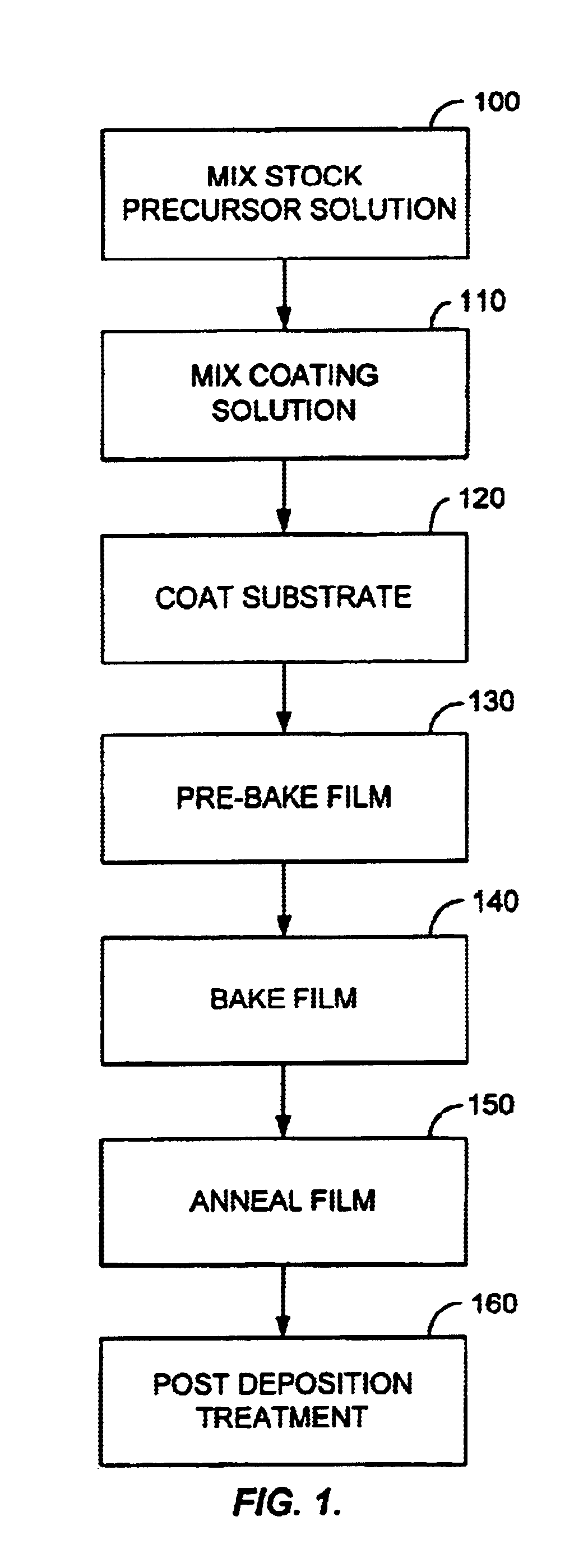Ionic additives for extreme low dielectric constant chemical formulations
a technology of additives and low dielectric constant, applied in the direction of silicon oxides, silicon compounds, semiconductor/solid-state device details, etc., can solve the problems of harmful impurities in silicon oxide-based insulator films, no variations or alternatives known to present inventors are suitable for use in integrated circuit fabrication, and low k dielectric properties of films can be detrimentally affected, etc., to achieve the effect of minimal levels of alkali metal impurities and sufficient mechanical properties
- Summary
- Abstract
- Description
- Claims
- Application Information
AI Technical Summary
Benefits of technology
Problems solved by technology
Method used
Image
Examples
invention example 1
Precursor Formulation Using a Purified Surfactant and Additives and Effects of Additives
[0071]This example describes specific formulations for depositing porous silicon oxide-based films using a sol-gel-based process utilizing a precursor solution formulation which includes a purified nonionic surfactant and an ionic additive in accordance with embodiments of the present invention. Alkali metal impurities in the purified surfactant were approximately less than 50 parts per billion. The difference between the formulation of this example (Invention Example 1) and the formulation of the previous example (Comparative Example 2) is the addition of the additive to the precursor formulation as is described below. Using this precursor solution formulation the deposited films' properties meet the requirements of having a dielectric constant less than or equal to 2.5, and high porosity, while containing minimal levels of alkali metal impurities.
[0072]In particular formulations, tetramethylamm...
PUM
| Property | Measurement | Unit |
|---|---|---|
| dielectric constants | aaaaa | aaaaa |
| dielectric constants | aaaaa | aaaaa |
| dielectric constants | aaaaa | aaaaa |
Abstract
Description
Claims
Application Information
 Login to View More
Login to View More - R&D
- Intellectual Property
- Life Sciences
- Materials
- Tech Scout
- Unparalleled Data Quality
- Higher Quality Content
- 60% Fewer Hallucinations
Browse by: Latest US Patents, China's latest patents, Technical Efficacy Thesaurus, Application Domain, Technology Topic, Popular Technical Reports.
© 2025 PatSnap. All rights reserved.Legal|Privacy policy|Modern Slavery Act Transparency Statement|Sitemap|About US| Contact US: help@patsnap.com


